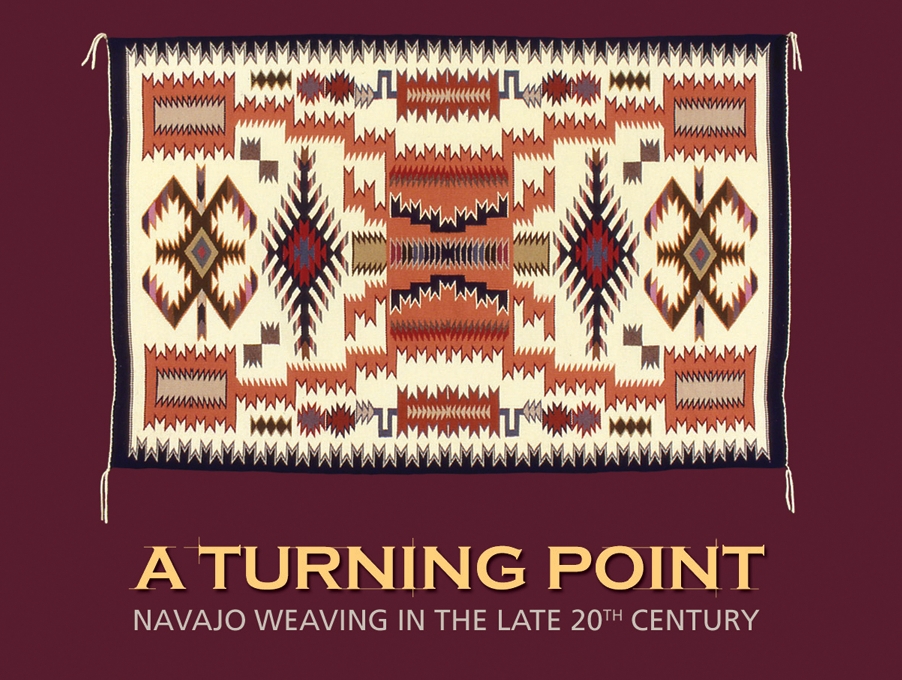
During regular museum hours Oct. 7-9, Native American weavers will demonstrate their craft outside the Cooper Gallery on the third floor of Morrill Hall. Artists Martha Schultz, Melissa Cody, and Lola Cody, representing three generations of one Navajo family based in Arizona, will interact with visitors and show them the process of creating a handwoven tapestry first hand. Regular museum admission will be charged to attend these demonstrations. Admission is free for UNL students, staff, and faculty with valid NU Card.
These demonstrations are in conjunction with the new textiles exhibit, "A Turning Point: Navajo Weaving in the Late 20th Century."
The exhibit features work by thirty-two contemporary Navajo weavers from the renowned Santa Fe Collection. The Santa Fe Collection was generously provided by Dr. and Mrs. Charles Rimmer of Amarillo, Texas. The exhibit was curated by Ann Lane Hedlund, director of the Gloria F. Ross Tapestry Program and curator of ethnology at the Arizona State Museum in Tucson, Arizona. More than 30 handwoven rugs and tapestries from the 1960s through 1980s will be on display reflecting many styles, including revival, sandpainting, pictorial, miniature, and sampler. Regional variations from the American Southwest are also represented, from Ganado to Teec Nos Pos and from Tuba City to Two Grey Hills.
The exhibit explores the changing artistic perceptions held by weavers, collectors, dealers and others, as Native American textiles moved from being viewed as traditional craft to fine art. The phrase "turning point" does not reference a specific person or event, but rather the complex cultural shift that emerged in the late 20th century as Navajo weavers began to self-identify as artists and extended their creative expressions beyond their tribal heritage. Guided by interpretive panels, museum visitors will discover the rise of the individual Navajo artists, as well as how handwoven artwork once seen as anonymously-made curios, trade goods, and home furnishings came to represent artistic mastery and museum-quality investments rich with beauty and cultural meaning.
More details at: http://events.unl.edu/2010/10/07/50590/